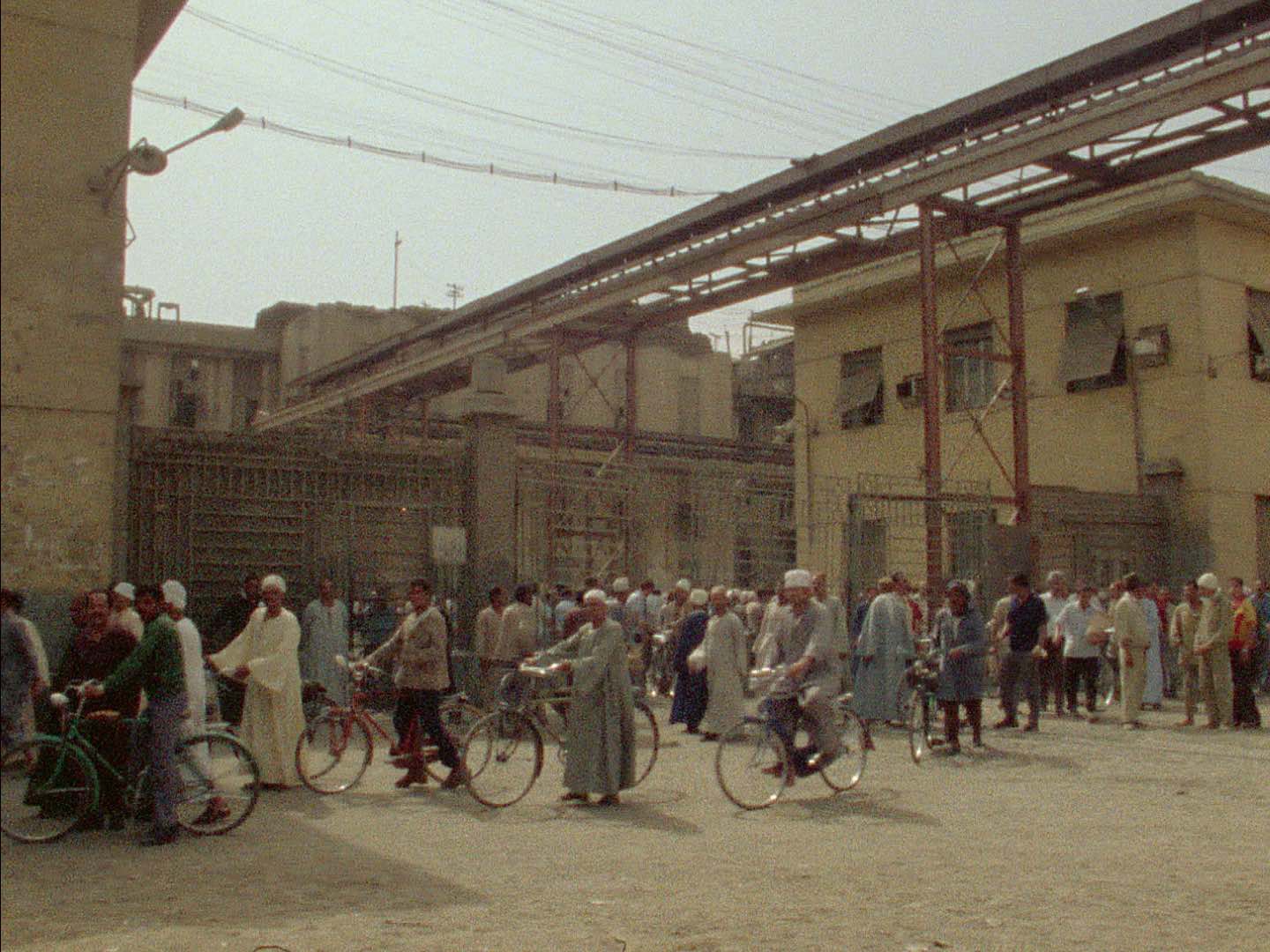“One must therefore view the second part of Too Early/Too Late as a peculiar performance, comprised of approaches and retreats, where the filmmakers, less meteorologists than acupuncturists, search for the spot – the only spot, the right spot – where their camera can capture people without disturbing them. Two dangers immediately arise: exotic tourism and the invisible camera. Too close, too far. In an extended “scene,” the camera is positioned in front of a factory gate, enabling one to observe the Egyptian workers who pass by, enter, and exit. Too close for them not to see the camera, too far for them to be tempted to go towards it. To find this point, this moral point, is at this moment the entirety of the Straubs’ art.” – Serge Daney, “Cinemeteorology,” 1982
For a long time, the incessant repetition of critical clichés (“obtuse,” “difficult,” “uncompromising”) nearly displaced perceptive criticism of Danièle Huillet and Jean-Marie Straub’s cinema. Serge Daney was among the first critics to provide an insightful analysis of the aesthetics and politics of the duo, influencing many subsequent interpretations of their work. Daney’s piece on Too Early/Too Late elucidates the complexities of the moral dimensions of shots that, to the eyes of most others, would appear as uneventful images of empty landscapes or aimless passersby. Straub and Huillet requested that this piece be translated and included in a retrospective catalogue of their work in the 1980s.
This programme is presented in collaboration with Arta Barzanji and Gerard-Jan Claes, who edited and compiled for Sabzian the issue ‘Serge Daney and the Promise of Cinema, available in English and French, featuring contributions from critics, academics, and translators from around the world.
PART OF Sabzian Events


